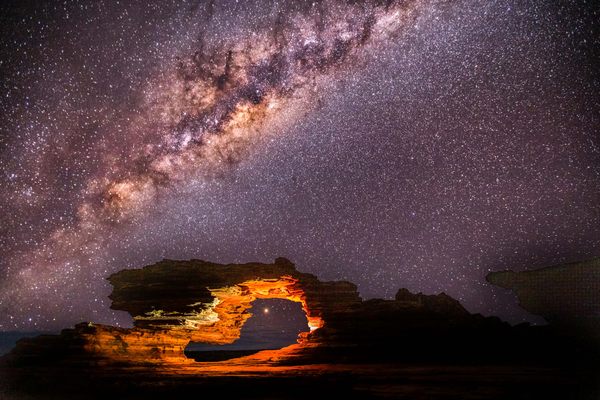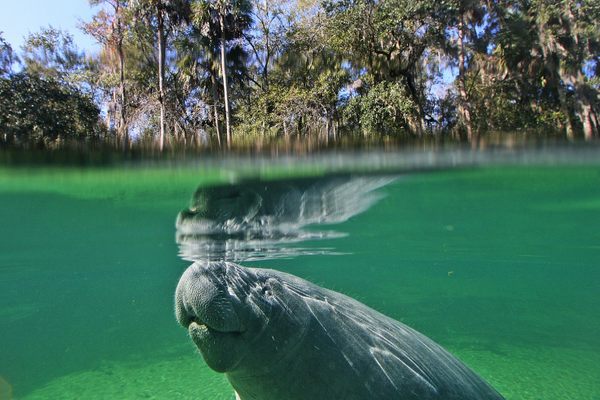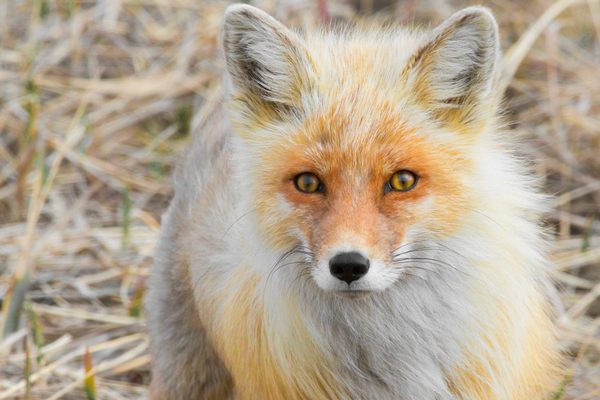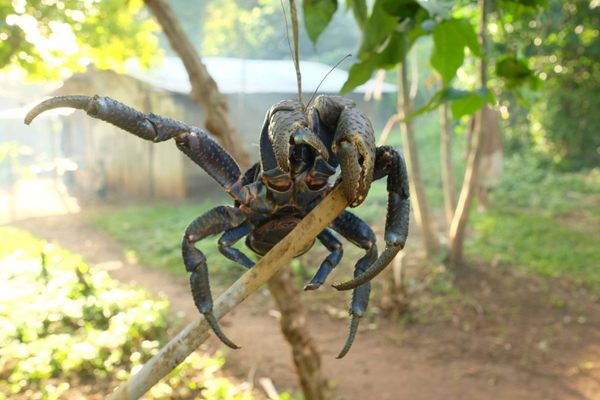7 Books to Inspire Your Next Nature Adventure
From a hilarious dive into animal lawbreakers to a harrowing true crime tale in the Shenandoah Valley.
Summer is here, and for many of us that means it’s time to get outside. Whether you’re a beach person who can’t wait to uncover sandy wonders, a hiker hoping to catch the last of California’s superbloom, or a gardener tending a new peanut butter fruit tree (it’s really a thing), summer invites us into nature, and encourages us to engage with the unknown. And if you’re like us, you’re probably hunting for a book to bring along on the adventure—or inspire one! Atlas Obscura has put together this list of some of our favorite nature and wilderness books to help you along.
How Far the Light Reaches: A Life in Ten Sea Creatures
by Sabrina Imbler
A mile from the San Francisco Bay, a 13-year-old Sabrina Imbler staged a protest at a Petco. She was there on behalf of the common goldfish, determined to sway customers from condemning the hardy fish to a bowl where they would die within two to three years (if they were lucky). Goldfish can live up to 20 years in the wild and grow as heavy as a pineapple: These tangerine-colored fish are survivors. In their award-winning debut, Imbler, a former staff writer at Atlas Obscura, weaves together their own life story with tales of 10 extraordinary creatures of the deep, marveling at the predatory strength of a strangely named marine worm, the resilience of Chinese sturgeon, and other miraculous attributes of ocean organisms.
The Soul of an Octopus: A Surprising Exploration into the Wonder of Consciousness
by Sy Montgomery
This New York Times bestseller and National Book Award finalist is a captivating dive into the mysterious world of octopuses. From a Boston aquarium to the reefs of French Polynesia, journalist Sy Montgomery travels the world in a quest to understand these curious creatures, painting a vivid picture of her humorous and moving encounters with these cephalopods and the humans who care for them. Along the way, you’ll meet the wily Octavia, a giant Pacific octopus at the New England Aquarium who cleverly steals a bucket of fish unseen; the playful Kali, who gives Montgomery a long handshake whenever they see each other; and plenty of other wild and aquarium-bound eight-armed wonders. The book is in many ways a love story between Montgomery and these intelligent invertebrates.

Black Lion: Alive in the Wilderness
by Bridget Pitt and Sicelo Mbatha
When he was seven years old, Sicelo Mbatha watched a crocodile drag his best friend into a river to his death. The experience left the young, nature-loving Mbatha terrified and angry. Despite having every reason to turn his back on South Africa’s unforgiving wilderness, Mbatha instead chose to look closer. Decades later, as a wilderness guide and park ranger, his life-changing encounters with lions, elephants, water buffaloes, and other animals have taught him a deep respect for the natural world. Cowritten with environmentalist Bridget Pitt, Mbatha’s memoir is a vital reminder of how nature can heal even the deepest wounds.
An Immense World: How Animal Senses Reveal the Hidden Realms Around Us
by Ed Yong
Earth is full of sights, sounds, smells, vibrations, magnetic fields, and more, and every organism, humans included, can only experience a small fraction of this sensory world. In this 2022 New York Times bestseller, Pulitzer Prize–winning science journalist Ed Yong invites you to experience the world in an entirely new way—like a dolphin or maybe a turtle. Yong imagines what it’s like to smell the world like a dog, simultaneously taking in past and present. He shows what it’s like to see like a scallop or hear and make vibrations like courting insects. The wonders Yong offers are ones we can only begin to understand—through these creatures that experience the world we all share a little differently.
Trailed: One Woman’s Quest to Solve the Shenandoah Murders
by Kathryn Miles
“They must have been followed,” writes award-winning journalist Kathryn Miles in the preface of her book Trailed. It’s the thought Miles always returns to after years of digging into the unsolved double homicide of Lollie Winans and Julie Williams, two queer women who were brutally murdered in Virginia’s Shenandoah National Park in May 1996. While Miles’s thoroughly researched and rigorous account of Winans and Williams’s murders remains the focus of the book, Trailed also tells the much larger story of how women, BIPOC, and the LGBTQ+ community experience nature. The book ultimately serves as a crucial call to action for how nature must be made accessible and safe for all.

Fuzz: When Nature Breaks the Law
by Mary Roach
The hilarious Mary Roach is at it again in this delightful exploration of what happens when humans and animals run afoul of one another. In this instant New York Times bestseller, Roach travels the globe for answers. In India, she learns how wildlife researchers are trying to tackle the country’s macaque conundrum. In Italy, she wakes to see seagulls (yet again) destroy the Vatican’s Easter flowers, and in Aspen, Colorado, she tags along with the wildlife managers who handle break-ins—by bears. Ultimately, Roach offers an amusing and hopeful answer to how humans and animals can coexist.
Brave the Wild River: The Untold Story of Two Women Who Mapped the Botany of the Grand Canyon
by Melissa Sevigny
In 1938, female botanists Elzada Clover and Lois Jotter set out to complete the first botanical survey of the Grand Canyon. Around the nation, newspapers warned that two women couldn’t possibly survive the hazards of the Colorado River. But in early June, the determined team set out with a crew of boatmen and a photographer. What followed changed history. After running more than 660 miles of river over the course of 43 days, Clover and Jotter became the first non-Indigenous women to successfully complete the journey, and today scientists continue to use their botanical papers to understand how Glen Canyon and Hoover Dam forever altered the region’s plant life. A thrilling adventure story, science journalist Melissa Sevigny’s book uncovers the lives of the women behind the expedition, telling their story for the first time to a modern audience.
Each item is independently selected by our editorial staff. If you buy something through our links, Atlas Obscura may earn an affiliate commission.










































Follow us on Twitter to get the latest on the world's hidden wonders.
Like us on Facebook to get the latest on the world's hidden wonders.
Follow us on Twitter Like us on Facebook